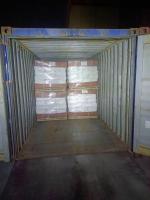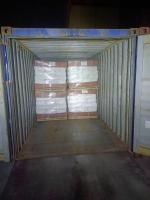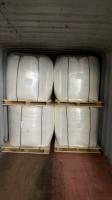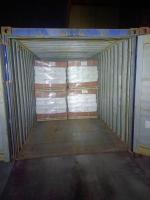Our Products
Polyacrylamide / what is the function of anionic polyacrylamide used for construction bored pile?

what is the function of anionic polyacrylamide used for construction bored pile?
Anionic polyacrylamide (APAM) is a type of water-soluble polymer that is commonly used in the construction industry, particularly in bored pile construction. Bored pile construction involves drilling a hole into the ground and filling it with concrete to create a foundation for a building or structure. APAM is used in the construction of bored piles as a slurry stabilizer, a fluid loss reducer, and a rheology modifier. In this article, we will explore the functions of APAM in bored pile construction.
1. Slurry Stabilization
APAM is commonly used as a slurry stabilizer in bored pile construction. When a hole is drilled into the ground, the sides of the hole may become unstable due to the presence of loose soil or water. If the sides of the hole collapse, it can cause problems with the stability of the foundation and potentially lead to structural damage. To prevent this from happening, a slurry is usually used to stabilize the sides of the hole.
The slurry is a mixture of water, bentonite clay, and other additives, such as APAM. APAM is added to the slurry to improve its stability and prevent the sides of the hole from collapsing. APAM molecules have a negative charge, which makes them attracted to the positively charged clay particles in the slurry. This attraction causes the APAM molecules to form a network around the clay particles, creating a more stable structure. The addition of APAM to the slurry also helps to prevent the separation of water from the slurry, which can cause instability.
2. Fluid Loss Reduction
APAM is also used as a fluid loss reducer in bored pile construction. Fluid loss occurs when water in the slurry is absorbed by the surrounding soil or rock. This can cause the slurry to lose its properties and become less effective in stabilizing the sides of the hole. To prevent fluid loss, APAM is added to the slurry.
APAM molecules act as a barrier between the slurry and the surrounding soil or rock, reducing the amount of water that is absorbed. This helps to maintain the stability of the slurry and prevent the sides of the hole from collapsing. The use of APAM as a fluid loss reducer can also reduce the amount of water needed in the slurry, which can result in cost savings and environmental benefits.
3. Rheology Modificationwhat is the function of anionic polyacrylamide used for construction bored pile?
APAM is used as a rheology modifier in bored pile construction. Rheology refers to the study of the flow and deformation of materials. In the case of bored pile construction, rheology is important because it determines the ability of the slurry to flow and stabilize the sides of the hole. APAM is added to the slurry to modify its rheology and improve its performance.
APAM molecules can alter the viscosity and yield stress of the slurry, which affects its flow properties. The addition of APAM to the slurry can increase its viscosity, which makes it more effective in stabilizing the sides of the hole. APAM can also reduce the yield stress of the slurry, making it easier to pump and flow through the drill bit. The use of APAM as a rheology modifier can improve the efficiency and effectiveness of the bored pile construction process.
4. Environmental Benefits
The use of APAM in bored pile construction can also provide environmental benefits. APAM is a water-soluble polymer that is biodegradable and non-toxic. This means that it does not accumulate in the environment or harm wildlife. The use of APAM in the slurry can also reduce the amount of water needed in the construction process, which can conserve water resources.
In addition, the use of APAM in bored pile construction can help to reduce the amount of waste generated. Anionic polyacrylamide (APAM) is a type of water-soluble polymer that is commonly used in the construction industry, particularly in bored pile construction. Bored pile construction involves drilling a hole into the ground and filling it with concrete to create a foundation for a building or structure. APAM is used in the construction of bored piles as a slurry stabilizer, a fluid loss reducer, and a rheology modifier. In this article, we will explore the functions of APAM in bored pile construction.what is the function of anionic polyacrylamide used for construction bored pile?
1. Slurry Stabilization
APAM is commonly used as a slurry stabilizer in bored pile construction. When a hole is drilled into the ground, the sides of the hole may become unstable due to the presence of loose soil or water. If the sides of the hole collapse, it can cause problems with the stability of the foundation and potentially lead to structural damage. To prevent this from happening, a slurry is usually used to stabilize the sides of the hole.
The slurry is a mixture of water, bentonite clay, and other additives, such as APAM. APAM is added to the slurry to improve its stability and prevent the sides of the hole from collapsing. APAM molecules have a negative charge, which makes them attracted to the positively charged clay particles in the slurry. This attraction causes the APAM molecules to form a network around the clay particles, creating a more stable structure. The addition of APAM to the slurry also helps to prevent the separation of water from the slurry, which can cause instability.
2. Fluid Loss Reduction
APAM is also used as a fluid loss reducer in bored pile construction. Fluid loss occurs when water in the slurry is absorbed by the surrounding soil or rock. This can cause the slurry to lose its properties and become less effective in stabilizing the sides of the hole. To prevent fluid loss, APAM is added to the slurry.
APAM molecules act as a barrier between the slurry and the surrounding soil or rock, reducing the amount of water that is absorbed. This helps to maintain the stability of the slurry and prevent the sides of the hole from collapsing. The use of APAM as a fluid loss reducer can also reduce the amount of water needed in the slurry, which can result in cost savings and environmental benefits.
3. Rheology Modification
APAM is used as a rheology modifier in bored pile construction. Rheology refers to the study of the flow and deformation of materials. In the case of bored pile construction, rheology is important because it determines the ability of the slurry to flow and stabilize the sides of the hole. APAM is added to the slurry to modify its rheology and improve its performance.
APAM molecules can alter the viscosity and yield stress of the slurry, which affects its flow properties. The addition of APAM to the slurry can increase its viscosity, which makes it more effective in stabilizing the sides of the hole. APAM can also reduce the yield stress of the slurry, making it easier to pump and flow through the drill bit. The use of APAM as a rheology modifier can improve the efficiency and effectiveness of the bored pile construction process.
4. Environmental Benefits
The use of APAM in bored pile construction can also provide environmental benefits. APAM is a water-soluble polymer that is biodegradable and non-toxic. This means that it does not accumulate in the environment or harm wildlife. The use of APAM in the slurry can also reduce the amount of water needed in the construction process, which can conserve water resources.
In addition, the use of APAM in bored pile construction can help to reduce the amount of waste generated.





